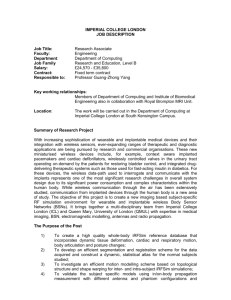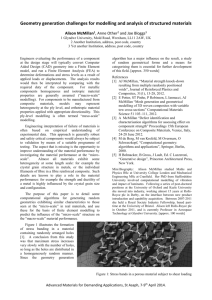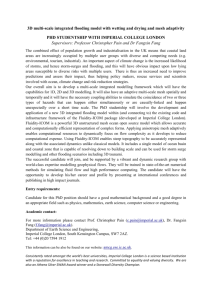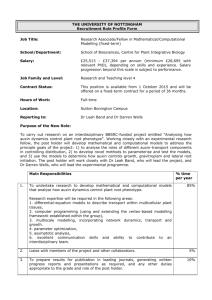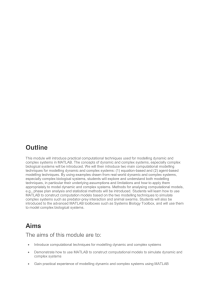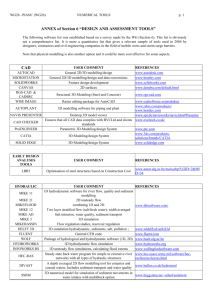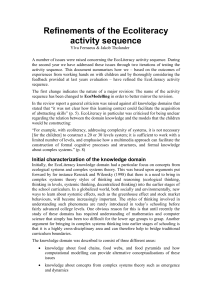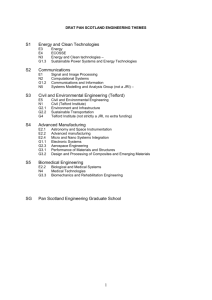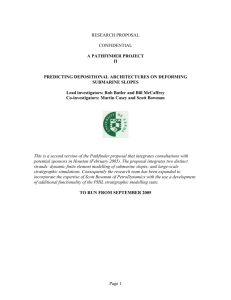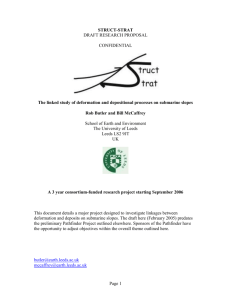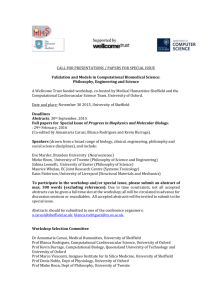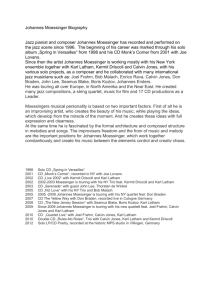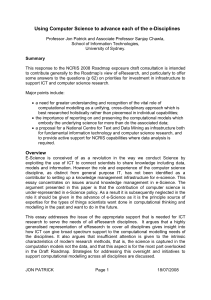A structural geology enigma - kink band formation
advertisement
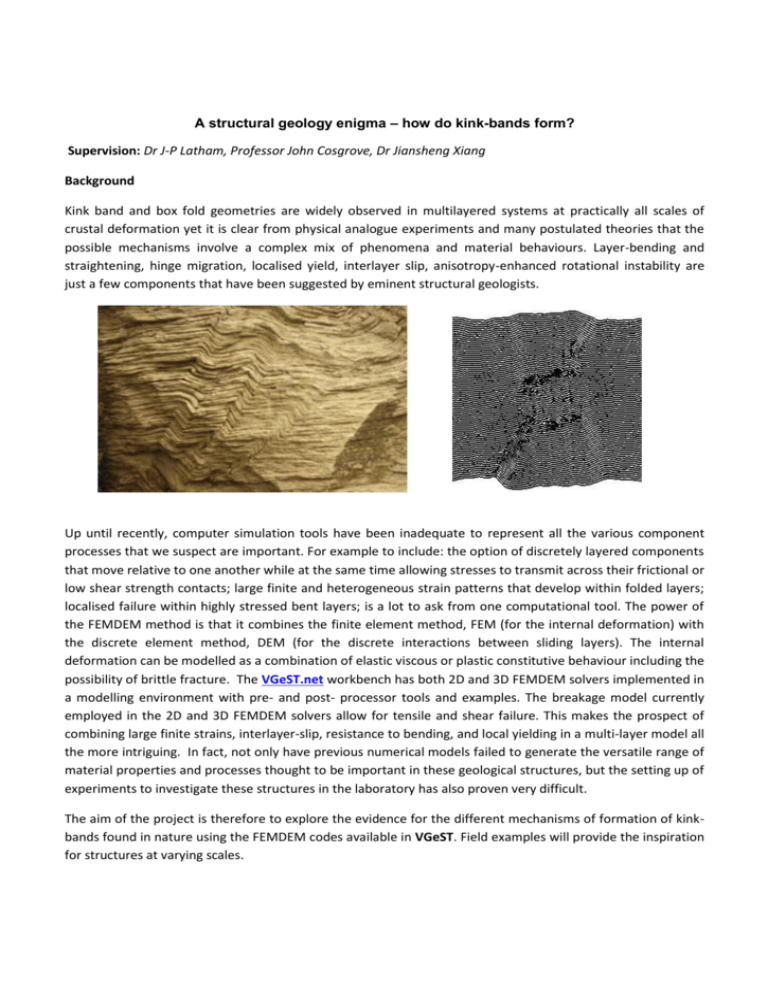
A structural geology enigma – how do kink-bands form? Supervision: Dr J-P Latham, Professor John Cosgrove, Dr Jiansheng Xiang Background Kink band and box fold geometries are widely observed in multilayered systems at practically all scales of crustal deformation yet it is clear from physical analogue experiments and many postulated theories that the possible mechanisms involve a complex mix of phenomena and material behaviours. Layer-bending and straightening, hinge migration, localised yield, interlayer slip, anisotropy-enhanced rotational instability are just a few components that have been suggested by eminent structural geologists. Up until recently, computer simulation tools have been inadequate to represent all the various component processes that we suspect are important. For example to include: the option of discretely layered components that move relative to one another while at the same time allowing stresses to transmit across their frictional or low shear strength contacts; large finite and heterogeneous strain patterns that develop within folded layers; localised failure within highly stressed bent layers; is a lot to ask from one computational tool. The power of the FEMDEM method is that it combines the finite element method, FEM (for the internal deformation) with the discrete element method, DEM (for the discrete interactions between sliding layers). The internal deformation can be modelled as a combination of elastic viscous or plastic constitutive behaviour including the possibility of brittle fracture. The VGeST.net workbench has both 2D and 3D FEMDEM solvers implemented in a modelling environment with pre- and post- processor tools and examples. The breakage model currently employed in the 2D and 3D FEMDEM solvers allow for tensile and shear failure. This makes the prospect of combining large finite strains, interlayer-slip, resistance to bending, and local yielding in a multi-layer model all the more intriguing. In fact, not only have previous numerical models failed to generate the versatile range of material properties and processes thought to be important in these geological structures, but the setting up of experiments to investigate these structures in the laboratory has also proven very difficult. The aim of the project is therefore to explore the evidence for the different mechanisms of formation of kinkbands found in nature using the FEMDEM codes available in VGeST. Field examples will provide the inspiration for structures at varying scales. We are looking for an earth science, mathematics, physics or engineering graduate with a strong interest in structural geology and tectonics. Some computational modelling and code development experience mould be an advantage but is not essential. Enthusiasm for performing numerical i.e. virtual experiments and linking results with experimental and field observations is essential. The student will be joining a strong geomechanics group underpinned by our applied computational modelling group (AMCG), with many applications in earth science, ocean and industrial modelling. The student will be given appropriate training in the necessary methods of numerical modelling. For more information please contact John-Paul Latham (j.p.latham@imperial.ac.uk). For application details please contact Samantha Symmonds (E-mail: sam.symmonds@imperial.ac.uk, Tel: +44 (0) 207 594 7339). http://www3.imperial.ac.uk/earthscienceandengineering/courses/phdopportunities/phdapplicationprocedure



